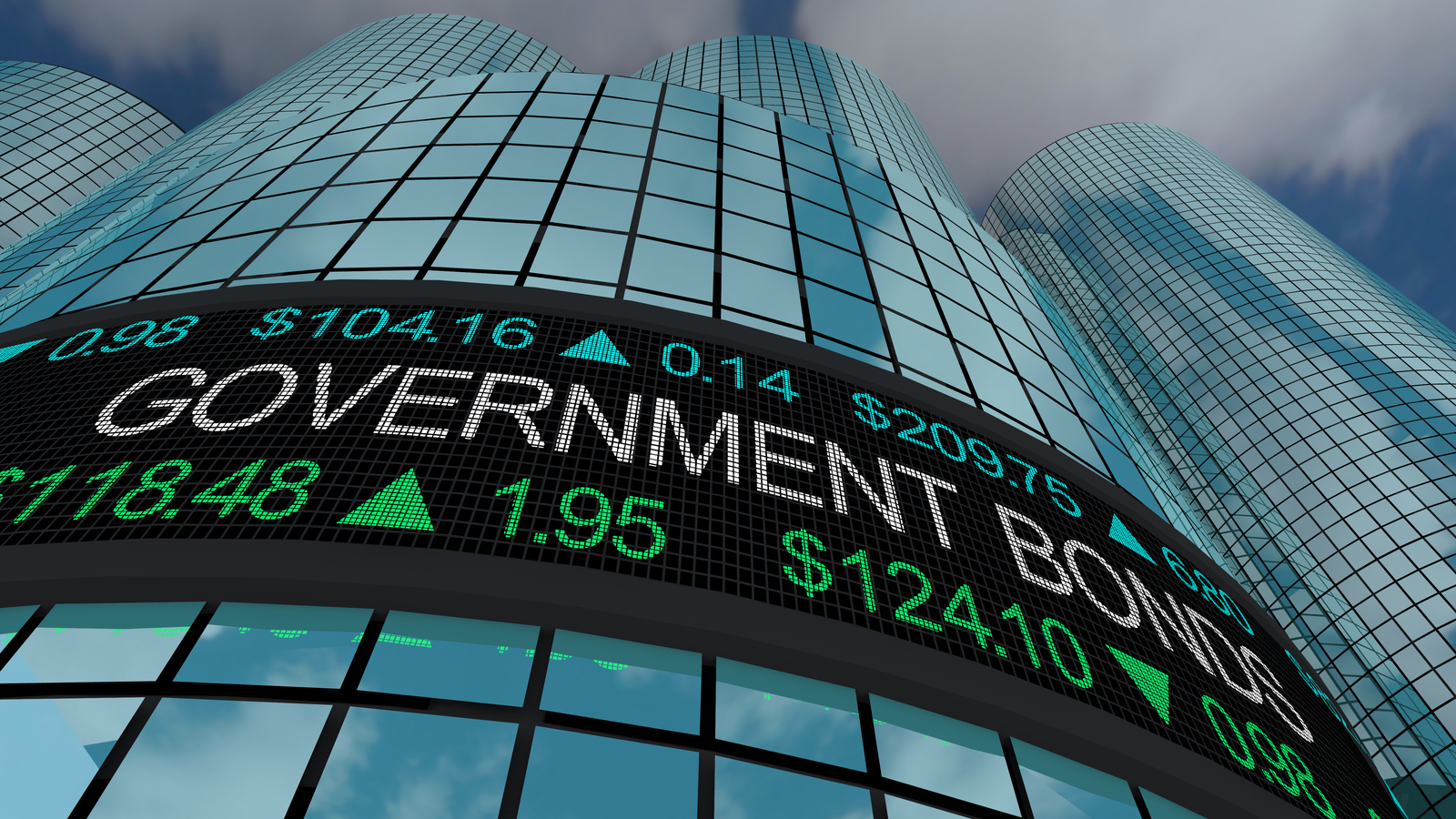
Bill Ackman’s bond bet … our government’s spending problem … why the situation won’t improve … the inconsistency in yields/stock prices today
Billionaire hedge fund manager Bill Ackman just made a big bet, and how it plays out is going to impact your portfolio for better or worse.
To set the stage, on why he’s making this big bet let’s begin with the chart below.
We present it first without any commentary or description. Can you guess what it is?

Congrats if you answered, “Federal Government: Current Expenditures.”
The vertical spikes are the pandemic-related blowouts in government spending. And notice that where government spending has now settled is sharply higher than its level leading into the pandemic.
This out-of-control spending has pushed the national debt to $32.6 trillion.
This figure is so enormous that it’s virtually impossible to grasp, but here’s a point of context…
If we compare our nation’s debt level to the size of our nation’s entire GDP – so, we’re talking every single dollar our economy produces – the U.S. debt size is 132% the size of our economy.
In other words, for every dollar of productivity we create, we generate $1.32 of debt.
More concerning than the size of our debt is its acceleration
Below, we look at our federal government’s total public debt dating back to the 1970s.
I’ve added two overlays. First, there’s a line to show you the linear pace (roughly) at which this debt grew from the 70s through the global financial crisis. Second, there’s a parabolic growth curve in red that has replaced the linear growth line in recent years.

Clearly, our government has an enormous spending problem.
But it also has an enormous revenue problem.
Our government is promising more and more entitlements to our citizenry while not asking the entire citizenry to foot the bill.
To show you what this looks like, let’s compare our federal government’s $32.6 trillion debt on a per citizen basis and then on a per taxpayer basis.
If the government forced all Americans to absorb an equal share of our national debt by straight-line division, we’d all be on the hook for $97,498.
But if we limit those footing the bill only to taxpayers?
$253,686.
Last year, the Digest featured commentary from our CEO Brian Hunt explaining this gap
Why is there such a huge difference between these numbers?
Here’s Brian to explain:
Over the past 40 years, the percentage of people getting more in government benefits than they pay in has exploded.
Politicians discovered they could win more elections by promising more and more “free benefits.”
And the percentage of Americans that are “net tax recipients” has exploded as well.
As we speak, it’s estimated that 60% of Americans are net tax recipients.
Well over half of the people in this country get more than they put in.
This is now simply the reality of our political and economic landscape. But it’s important that we be open-eyed about it, because as we’ll see shortly, it impacts our portfolios.
But let’s make one last point before we turn to the investment implications.
Our government’s debt-to-spending problem will not improve.
As Brian noted, politicians don’t win elections by cutting entitlements. But it’s worse than that – they can’t cut entitlements at this point because they’ve created an expectation and dependency on those entitlements.
The book Toxic Charity from Robert Lupton explains how this dynamic plays out. Here’s the 30,000-foot summation:
Give once and you elicit appreciation. Give twice and you create anticipation. Give three times and you create expectation. Give four times and it becomes entitlement. Give five times and you establish dependency.
Our government has created a state of dependency. Because of this, its spending/revenue problem will not improve. And it will get worse for those taxpayers who foot the bill.
Let’s add one more wrinkle to truly drive this home…
This mindboggling $32.6 trillion debt load we’ve been discussing doesn’t include what’s called “unfunded liabilities.” This category includes things like Medicare and Social Security.
When we throw unfunded liabilities into the mix, our government’s total “on the hook” debt amount jumps from $32.6 trillion to $197.7 trillion.
You – as a taxpayer – are on the hook to pay this.
So, how does all of this relate to Bill Ackman and your portfolio?
Last week, we learned that Ackman is betting big against government bonds.
Specifically, he has shorted the 30-year treasury bond. This means he’s expecting its price to drop.
Here’s Ackman explaining why he’s making the bet:
With $32 trillion of debt and large deficits as far as the eye can see and higher refi rates, an increasing supply of T [Treasuries] is assured.
When you couple new issuance with QT, it is hard to imagine how the market absorbs such a large increase in supply without materially higher rates.
Let’s unpack this to make sure we’re all on the same page.
We’ve spent so much time in today’s Digest discussing the government’s spending and the public’s expectation of entitlements to prepare for Ackman’s point about “deficits for as far as the eye can see.”
Due to the scope of entitlements and how the government taxes our citizenry, the government cannot generate enough revenue from taxes alone to cover our nation’s expenses. This will not change.
So, what will the government do to fund this enormity of expenses?
Offer debt – or government bonds.
And due to how much the government owes, as well as how much free stuff it’s promising its citizens, Ackman is saying that our government will be forced to issue an avalanche of bonds to generate the cash flow to pay for everything.
Meanwhile, the Fed is simultaneously enacting a QT or “Quantitative Tightening” campaign. This means it is selling the government bonds that have been on its balance sheet.
This is a reversal of the Quantitative Easing bond buying campaign from the pandemic.
So, what do you get when you have the government issuing tons of new bonds to fund its debts and the Fed selling tons of bonds from its balance sheet?
A bond market that’s drowning in bond supply.
And as you know from Econ 101, when the supply of something explodes higher while all else remains equal, the price drops.
Now, because bond prices and bond yields move in inverse fashion, as a bond price falls, the related bond yield will rise.
And this brings us to your portfolio…
Climbing bond yields are a headwind for most stock portfolios
There are two primary reasons for this – valuation and competition.
From a valuation perspective, when analysts estimate a stock’s value, they use what’s called a “discount rate,” which is heavily influenced by, in part, longer-term government bond yields.
Analysts add up what they believe will be a company’s future cash flows, then use this discount rate to calculate a “net present value” of all those future cash flows.
This net present value is what analysts think is a fair stock price.
Given the math involved in this calculation, the higher the discount rate, the lower the net present value of future flows, and vice versa.
So, higher long-term government bond yields – and by extension – a higher discount rate – put downward pressure on stock prices.
From a competition perspective, the higher that “risk free” government bond yields go, the more it lures conservative investors away from stocks.
After all, when your money can earn roughly 5% returns without any risk of a loss (if you hold the bond to maturity) that’s very appealing to many conservative income investors who view today’s stock valuations with concern.
Money flowing out of the stock market toward the bond market is a downward influence on stock prices.
Now, if Ackman is right, the 30-year government bond yield is about to head materially higher. That’s a headwind for your stock portfolio.
Keep your eye on this inconsistency in the bond yield/stock price relationship
If stock prices don’t like higher bond yields, then you would expect to see a clear inverse relationship between them. And, in fact, that’s what we tend to find.
Below, we compare the S&P (in green) to the 30-year treasury yield (in black) last year.
Notice that, generally, when bond yields climb, stock prices drop, and vice versa.

With this context, let’s look at this same chart but jump ahead to what’s been happening with the S&P and the 30-year treasury yield since April.
As you look below, how much inverse correlation do you see?
Spoiler: not that much.
The 30-year treasury bond yield (in black) has jumped higher. But instead of falling as usual, stock prices (in green) have kept climbing.

So, is this time different? Will the inverse relationship break down as bond yields pop while stock prices pop?
It’s certainly possible. I don’t know.
But Ackman isn’t just betting on climbing bond yields because of government debt and liabilities. He’s vocal about this bet also being a hedge against the risk of falling stock prices.
Back to Ackman:
…we are short in size the 30-year [Treasury bond] — first as a hedge on the impact of higher LT rates on stocks, and second because we believe it is a high probability standalone bet.
The best hedges are the ones you would invest in anyway even if you didn’t need the hedge. This fits that bill, and also I think we need the hedge.
So, what’s the overall takeaway here? Is it time to bail on stocks?
Nope.
Our stance in the Digest hasn’t changed. The market has strong bullish momentum today. We believe in trading it for as long as it’s here and generating wealth.
But Saturday’s Digest, penned by my fellow-Digest-writer, Luis Hernandez, had the title: “Short-term Bullish, but Storm Clouds Ahead.” That’s a good summation.
It’s hard to tell how far off those clouds are in the distance… it’s also hard to tell how dark they are… or how long they might rain down on us if/when they arrive.
But we prepare for them by recognizing they exist, and having a plan for what to do when they finally blow in.
Bottom line: Enjoy bullish momentum today but pay attention to these macro forces, and what they could mean for your portfolio tomorrow.
Have a good evening,
Jeff Remsburg





